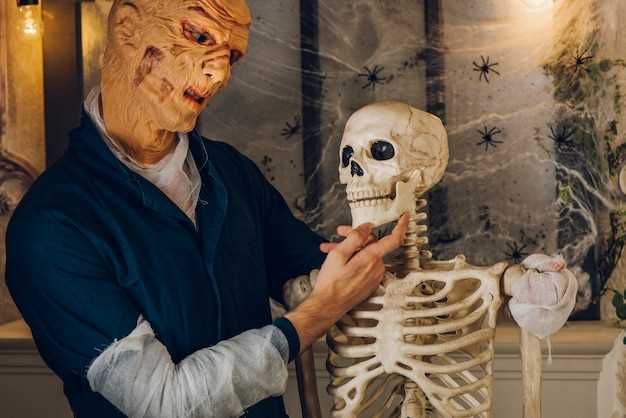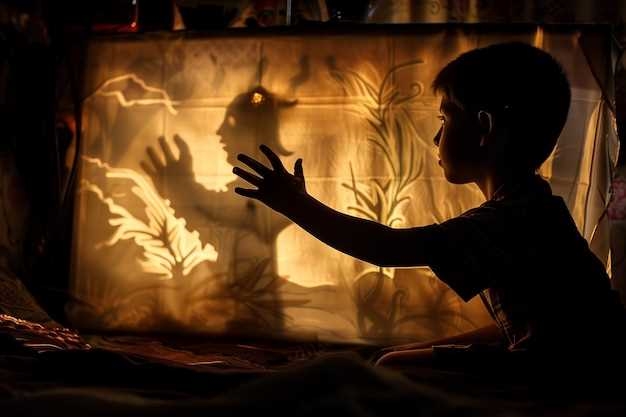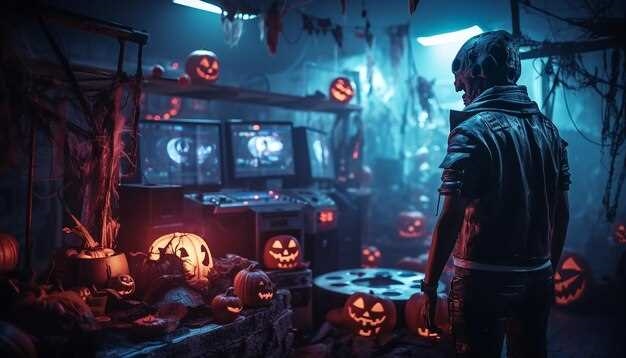
In the realm of storytelling, there exists a select group of individuals who possess a mesmerizing ability to take readers on a chilling journey into the depths of fear and terror. They are the maestros of macabre, the architects of nightmares – the wordsmiths who craft stories that haunt our dreams, leaving an indelible mark on our psyche. Today, we have the privilege of delving into the sinister mind of one such luminary, an enigmatic visionary who has dedicated their life to the art of weaving spine-tingling tales.
As we step into the shadowy realm of this esteemed author, we are immediately engulfed in an atmosphere heavy with anticipation. They are not merely storytellers, but custodians of a sinister realm brimming with nefarious creatures and unspeakable horrors. With a pen as their weapon of choice, they conjure phantoms that bypass our rational minds, burrowing deep into the core of our primal fears. The stories they tell are more than mere narratives; they engage our senses, making us feel the clammy touch of otherworldly beings and hear the echoes of spine-chilling whispers in the dark.
Stepping out of the twilight and into the dimly-lit study of this enigmatic author, we can’t help but notice the walls adorned with faded pages, each one a testament to their mastery of suspense and dread. The shelves groan under the weight of leather-bound tomes, their titles promising unearthly delights for those brave enough to delve into their dark recesses. It is amidst this eerie ambiance that our conversation takes place, an exchange of words that promises to unlock the cryptic secrets behind the creation of terrifying tales that have haunted readers for generations.
Finding Inspiration: Unearthing the Darkness Within
Delving into the depths of creativity and conjuring spine-chilling tales requires more than just imagination; it demands the unearthing of the hidden darkness within. In this section, we will explore the untapped sources of inspiration that horror authors draw upon to craft their terrifying narratives.
Just as a miner digs deep into the earth to discover precious gems, an author must dig deep into their psyche to excavate the fears, anxieties, and morbid curiosities that lurk within. The real essence of horror lies not only in the supernatural or external monsters but in the darkness that resides within each of us. This darkness can manifest as personal traumas, suppressed memories, or even the societal fears and taboos we dare not confront.
While some authors may find their darkness in the cobwebbed corners of childhood memories or the skeletons buried in their family’s closet, others may uncover it through intense introspection, challenging life experiences, or immersing themselves in the macabre and obscure. This self-exploration allows authors to tap into the universal aspects of fear and create resonating tales of terror that strike a chord with readers.
An important aspect of unearthing the darkness within is embracing the unpredictable nature of the human psyche. The human mind is a labyrinth full of hidden corridors, and it is within these winding passages that authors discover their most chilling ideas. Through the exploration of our own fears and vulnerabilities, we gain a deeper understanding of the human condition, allowing us to craft narratives that reflect the darkest recesses of our collective consciousness.
However, it’s essential to tread carefully when delving into these depths. The abyss of darkness can be overwhelming, and authors must maintain a delicate balance to avoid being consumed by their own shadows. Empathy, resilience, and self-care are crucial tools in navigating the treacherous terrain of horror writing.
In conclusion, finding inspiration for crafting terrifying stories goes beyond mere research or surface-level exploration. True horror authors must embark on a journey inward, unearthing the darkness within themselves and society to create narratives that resonate deeply with readers. By embracing our inner demons and the multifaceted aspects of human experience, horror authors bring to life tales that evokes fear, curiosity, and introspection.
Creating Atmosphere: Setting the Stage for Fear
Establishing the right atmosphere is crucial when it comes to crafting truly spine-chilling horror stories. In this section, we will delve into the art of creating the perfect setting that will evoke a sense of fear and anticipation in readers.
1. Building Tension with Descriptive Language
One of the most effective ways to set the stage for fear is through the use of descriptive language. By carefully selecting words and phrases that evoke dark and unsettling imagery, writers can transport their readers into a world where terror lurks at every corner. From the oppressive weight of shadows to the eerie silence that fills the air, each detail should work together to create an atmosphere of unease.
2. Utilizing the Power of Ambience
A well-crafted horror story relies not only on the physical setting, but also on the overall ambience it creates. The manipulation of sound, lighting, and environmental factors can greatly enhance the feeling of dread and anxiety. Whether it’s the distant, bone-chilling wail of the wind or the flickering, uncertain glow of a single candle, these atmospheric elements can play a pivotal role in immersing readers in a truly terrifying experience.
The Power of Suspense: Keeping Readers on the Edge
The ability to captivate and engage readers is essential for any horror author, and one of the most powerful tools in their arsenal is the skillful use of suspense. By creating an atmosphere of tension and anticipation, authors can keep their readers on the edge of their seats, unable to tear themselves away from the story.
When it comes to crafting terrifying tales, the author must carefully orchestrate the elements of suspense. Every scene, every sentence, and every word should contribute to the mounting sense of unease and apprehension. From the eerie descriptions of atmospheric settings to the subtle hints of impending danger, the author dangles the promise of terror before the reader, refusing to release it until the perfect moment.
One of the key techniques employed by horror authors is the art of foreshadowing. By planting subtle clues and hints throughout the narrative, they build a sense of anticipation in the reader’s mind. Whether it’s a seemingly innocent object that takes on a sinister significance later in the story or a fleeting mention of a mysterious character that sparks intrigue, foreshadowing creates a web of anticipation that keeps the reader guessing and fearing what may come next.
Another crucial aspect of suspenseful storytelling is the manipulation of pacing. By carefully controlling the rhythm and tempo of the narrative, authors can heighten the suspense to its maximum potential. This can include moments of intense action and terror followed by slower, more atmospheric passages that allow the tension to simmer and build. By alternating between these contrasting speeds, the author keeps the reader constantly on edge, unsure of what awaits them in the next turn of the page.
Moreover, the skilled use of descriptive language is paramount when it comes to evoking a sense of suspense. Vivid and evocative descriptions can transport the reader into the heart of the horrors unfolding on the page. The author’s choice of words can create a visceral experience, allowing the reader to feel the fear, hear the creaking floorboards, and sense the protagonist’s mounting terror. These sensory details serve to heighten the overall atmosphere of suspense and immerse the reader in the story.
In conclusion, the power of suspense cannot be underestimated in the realm of horror storytelling. Through the careful crafting of foreshadowing, pacing, and descriptive language, authors can keep readers on the edge of their seats, anxiously turning the pages to discover what horrors lie ahead. It is this skillful manipulation of suspense that separates exceptional horror authors from the rest, leaving a lasting impression on their readers long after the final page is turned.
Building Believable Characters: Characters that Haunt the Imagination
When it comes to creating captivating and bone-chilling horror stories, one of the most important aspects is crafting believable characters that leave a lasting impression on the readers. These characters not only drive the plot forward but also haunt the readers’ imaginations long after they put down the book. In this section, we will explore the key elements of building such characters and delve into techniques that will help you bring your characters to life.
1. Psychological Depth:
Characters that truly haunt the imagination often possess psychological depth that goes beyond simple scares. By delving into their pasts, fears, and motivations, you can create three-dimensional personas that readers can deeply connect with. Developing their backstories, haunted pasts, and hidden secrets will add layers of complexity to your characters and make them more memorable.
2. Flaws and Vulnerabilities:
No one is perfect, and neither should be your characters. In order to create realistic and relatable protagonists or villains, it’s crucial to infuse them with flaws and vulnerabilities. Whether it’s a phobia, a traumatic event, or an addiction, these imperfections humanize your characters and make them more believable. By exploiting these weaknesses, you can heighten the tension and suspense in your story, leaving readers on the edge of their seats.
3. Unique Traits and Mannerisms:
To make your characters truly unforgettable, you need to give them distinctive traits and mannerisms. These quirks can range from physical attributes like a distinctive scar or an unusual way of speaking to behavioral patterns such as an obsession with cleanliness or a tendency to whisper instead of speaking. These idiosyncrasies contribute to their overall mystique and make them stand out in the readers’ minds long after they finish the story.
4. Moral Ambiguity:
An effective technique to create characters that haunt the imagination is to introduce a sense of moral ambiguity. Characters who tread the thin line between good and evil force readers to question their own beliefs and morals. By blurring the boundaries between right and wrong, you can leave a deep impact on your audience, making them ponder the complexities of human nature even after they close the book.
By incorporating these key elements into your character development process, you can create truly memorable and haunting characters that will linger in the readers’ minds. Remember, the more real and relatable your characters are, the more terrifying and unforgettable their presence will be throughout your horror narrative.
The Art of the Twist: Surprising and Stunning your Audience
When it comes to crafting spine-chilling stories, one of the most crucial elements is the art of the twist. By incorporating unexpected and shocking revelations into your narrative, you have the power to mesmerize and leave your audience in a state of exhilaration. In this section, we explore the techniques and strategies that horror authors employ to create jaw-dropping twists that keep readers on the edge of their seats.
The Role of Descriptions: Evoking Terror through Vivid Imagery
In the world of horror literature, crafting a truly terrifying story requires more than just a chilling plot or a menacing villain. Descriptions play a vital role in evoking fear and capturing the reader’s imagination, allowing them to experience the terror firsthand. By skillfully using vivid imagery, authors can transport their readers to dark and eerie settings, make them feel the bone-chilling coldness of a misshapen monster’s breath on their neck, or hear the bloodcurdling sound of footsteps echoing in the distance.
Creating Atmosphere and Setting the Stage
One of the primary functions of descriptions in horror storytelling is to create a spine-tingling atmosphere that immerses the reader in a world of fear and uncertainty. Through carefully chosen words and detailed observations, the author sets the stage, painting a vivid picture that engulfs the reader’s senses. Whether it’s describing a dilapidated haunted mansion, an abandoned graveyard consumed by fog, or a desolate forest shrouded in darkness, the power of these descriptions lies in their ability to transport the reader to a place where fear becomes palpable and real.
Breathing Life into Monsters and Nightmares
In horror, the monsters and nightmares that haunt our darkest dreams are brought to life through descriptions that elicit genuine terror. By utilizing powerful language and imagery, authors can conjure up grotesque creatures that seep into the reader’s mind, leaving an indelible mark. From the leathery texture of a vampire’s pale skin to the piercing gaze of a malevolent spirit, these descriptions create a sense of terror and unease that lingers long after the book is closed. By evoking the reader’s imagination and tapping into their deepest fears, authors are able to make supernatural horrors feel terrifyingly real.
Through the skillful use of descriptions, horror authors have the ability to elicit a range of emotions in their readers – fear, unease, anticipation, and even dread. It is through these vivid depictions that the true essence of terror is conveyed, leaving a lasting impact on the reader’s psyche. So next time you dive into a spine-chilling horror story, pay close attention to the role descriptions play in crafting an unforgettable and truly terrifying experience.

